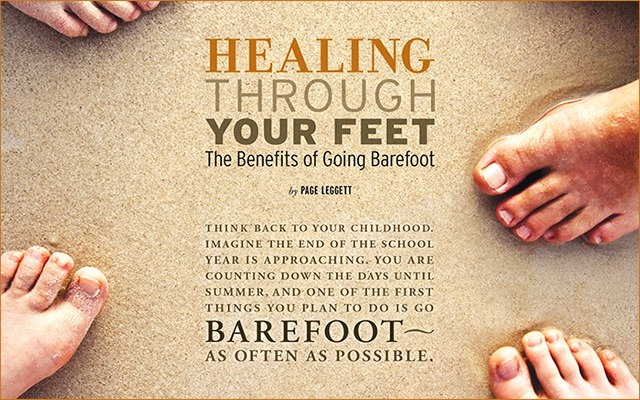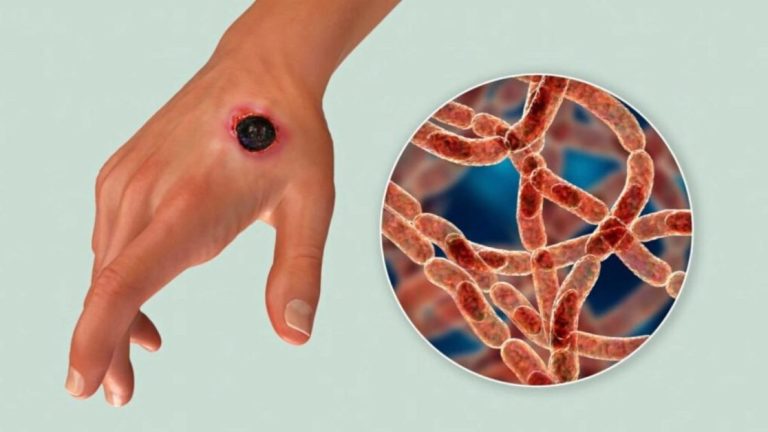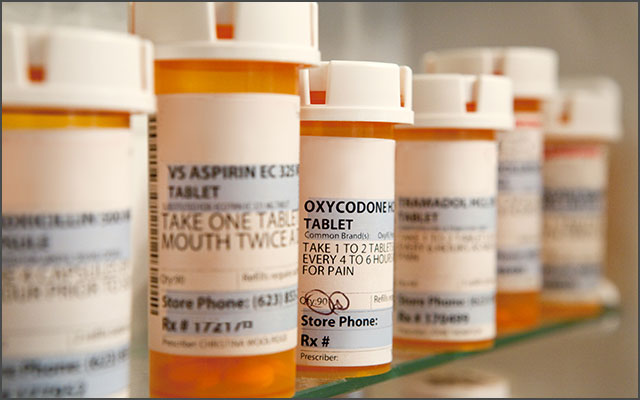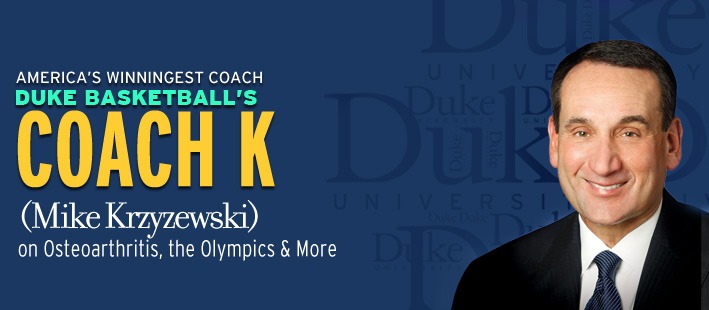Arthritis Pain Quiz
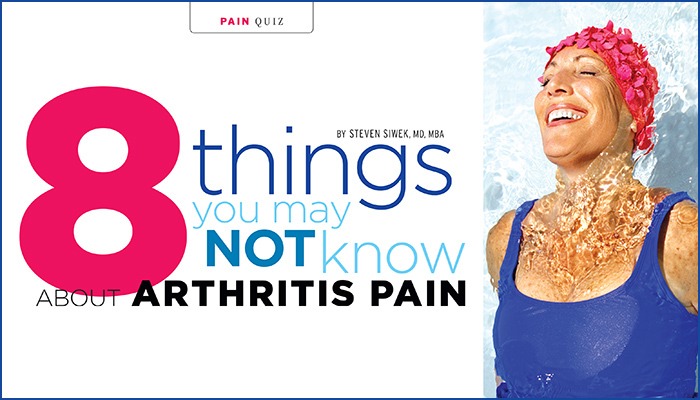
Summer is often a season filled with travel and outdoor fun, but painful arthritis can slow down even the most active. More than 50 million Americans of all ages live with arthritis; it’s not just a disease of old age. Read on to learn more about arthritis and how to manage the pain.
1. Two-thirds of people with arthritis are under the age of 65.
A. True
B. False
2. How many types of arthritis are there?
A. 8
B. 42
C. Over 100
3. Arthritis can cause pain in which of the following locations?
A. Low back
B. Hips
C. Knees and feet
D. Neck
E. Fingers
F. All of the above
4. Typically, arthritis pain and stiffness are worse late in the day.
A. True
B. False
5. If arthritis runs in your family, you will probably have arthritis as well.
A. True
B. False
6. Arthritis pain can be managed using:
A. Nonsteroidal anti-inflammatory drugs (NSAIDs)
B. Heat and cold therapy
C. Hydrotherapy (water therapy)
D. TENS units
E. Exercise
F. All of the above
7. The goals for arthritis treatment include all of the following, except:
A. Decrease arthritis symptoms
B. Minimize joint damage
C. Preserve mobility of joints
D. Maintain joint function
E. Cure arthritis
8. Exercise will exacerbate arthritis symptoms.
A. True
B. False
QUIZ ANSWERS
1. (A) True. Two-thirds of people with arthritis are under the age of 65, including 300,000 children. Arthritis affects people of all ages and races.
2. (C) Arthritis literally means joint inflammation and refers to a group of diseases that are associated with joint pain, joint swelling, and joint stiffness. Some types of arthritis can affect parts of the body other than joints. The two most common types of arthritis are osteoarthritis and rheumatoid arthritis.
3. (F) All of the above. Symptoms of arthritis vary among patients, but the most commonly affected areas are the low back, hips, knees, feet, neck, and hands. The most common symptoms are stiffness and pain.
4. (B) False. For most people, symptoms of stiffness and pain will be more noticeable in the morning after a prolonged period in the same position. Often, mild activity will help lubricate the joints and alleviate some of the symptoms. Depending on where the arthritis is located or how severe it is, symptoms may be present with activity like walking or lifting.
5. (B) False. While genetics can make one more susceptible to arthritis, lifestyle has a significant impact on the development of osteoarthritis. Diet, exercise, sleep patterns, and smoking will all affect osteoarthritis. Being overweight increases the risk of OA in the hips and knees. Overuse or injury can also lead to osteoarthritis in joints. Getting moderate exercise, eating a healthy diet, avoiding obesity, and refraining from smoking can all decrease the risk for arthritis.
6. (F) All of the above. NSAIDs are among the most common treatments for arthritis. NSAIDs work by blocking substances in the body that contribute to pain, inflammation, and muscle cramps. Exercise is another effective treatment. Exercise reduces joint pain, reduces stiffness, and improves flexibility. Heat can be used for 15-20 minutes up to three times a day to help reduce symptoms. Cold, or ice, can help stop the pain and reduce swelling when used for 10 to 15 minutes at a time. Water therapy has been shown to decrease pain and stiffness. Exercising in a pool is often easier because the water takes some weight off of painful joints.
7. (E) A rheumatologist (arthritis specialist) can help explain treatment options. For most forms of arthritis, there is no cure. The goals of treatment are to slow the progression of the disease, preserve the function of the joints, decrease pain and other symptoms and preserve a range of motion.
8. (B) False. Exercise is important for everyone, especially those with arthritis. Exercise will not only increase energy, improve sleep, improve heart health, increase bone and muscle strength, decrease depression and improve self-confidence, but it will also help to maintain healthy joints. Moving joints daily will improve the range of motion and can also help move nutrients to the cartilage and move waste away from the cartilage. Exercise plans should always be discussed with your doctor prior to starting. Not all forms of exercise are a good fit for people with arthritis; the best exercise will depend on the type of arthritis you have, the level of inflammation, and the stability of your joints.
PainPathways Magazine
PainPathways is the first, only and ultimate pain magazine. First published in spring 2008, PainPathways is the culmination of the vision of Richard L. Rauck, MD, to provide a shared resource for people living with and caring for others in pain. This quarterly resource not only provides in-depth information on current treatments, therapies and research studies but also connects people who live with pain, both personally and professionally.
View All By PainPathways


